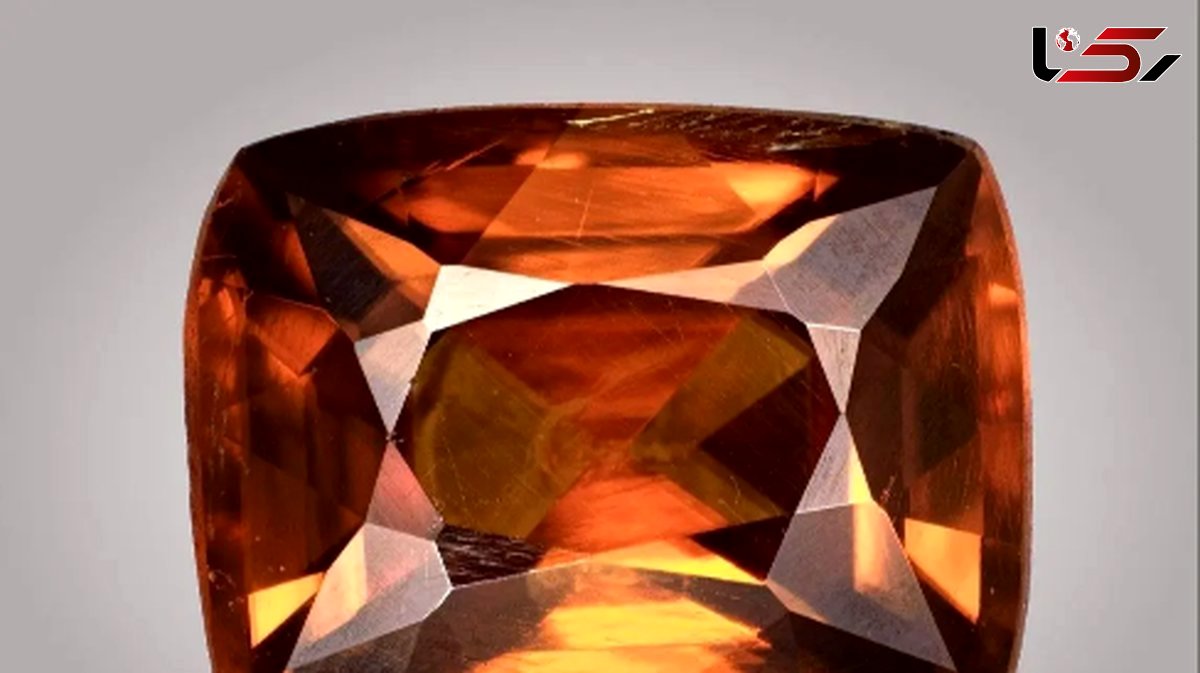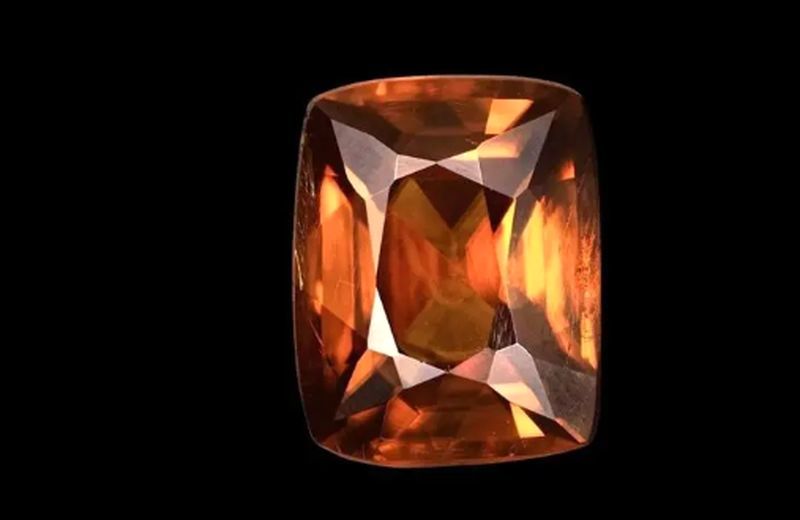The Rarest Gemstone in the World: Why Only One Specimen Exists
Rokna Economic Desk– Kyawthuite, the rarest known mineral on Earth, of which only a single specimen has ever been discovered, was found deep in the Mogok region of Myanmar. Despite its unremarkable appearance, this extraordinarily rare gemstone holds a unique place in geological science.

According to Rokna, in the depths of a remote area known as Mogok in Myanmar, a small orange crystal was discovered that initially attracted little attention. For those unfamiliar with mineralogy, the gem appeared indistinguishable from thousands of other polished stones. However, this crystal, later named Kyawthuite, turned out to be an unparalleled gem, incomparable to any other known mineral.
Reports indicate that the stone has garnered significant interest as one of the rarest substances recognized by science. The only known specimen of Kyawthuite, weighing 1.61 carats (0.3 grams), is currently housed at the Natural History Museum of Los Angeles County.
An Accidental Discovery of a Terrestrial Treasure
Kyawthuite was discovered in 2010 by ruby prospectors in a location called Chaung Gyi Valley, near Mogok, Myanmar. Initially mistaken for a common mineral, the stone was examined by Dr. Kyaw Thu, a prominent mineralogist, who identified it as a one-of-a-kind specimen. Following extensive testing, the International Mineralogical Association (IMA) formally recognized it as a new mineral in 2015.

Unique Chemical and Structural Characteristics
Kyawthuite is primarily composed of a combination of bismuth and antimony in oxidized form (with the chemical formula Bi³⁺Sb⁵⁺O₄), along with tantalum. While these individual elements are not inherently rare, their combination occurs only under highly specific conditions that scientists are still studying.
The gem exhibits a remarkable structure: checkerboard-like sheets of antimony and oxygen arranged alongside bismuth atoms. Kyawthuite has a density eight times greater than water, making it an exceptionally heavy material.
Formation Under Unique Conditions
Scientists believe Kyawthuite most likely formed within pegmatite rock, a type of igneous rock that crystallizes during the final stages of magma solidification. Myanmar’s geological landscape, shaped by the collision of the Indian and Asian tectonic plates, has created a unique environment conducive to the formation of minerals such as Kyawthuite. These geological changes, dating back to the Paleocene–Eocene era, generated the heat and pressure necessary for the emergence of such rare minerals.
Myanmar is also home to other extraordinary gemstones—for instance, Painite, which is considered the second rarest mineral in the world and is known for its unique combination of zirconium and boron.
A Rainbow of Gemstones in the Heart of Myanmar
The Mogok region, often referred to as the "Valley of Rubies," has been renowned for centuries for its radiant rubies. In addition to rubies, other gemstones such as sapphires, spinel, peridot, and tourmaline have also been discovered in this region.
A Dark Shadow Over the Land of Mineral Treasures
However, these valuable mineral resources come with troubling issues. Decades of political unrest, military rule, and human rights violations have created a challenging environment for the extraction and use of these resources. Moreover, the mining methods have frequently been criticized due to unsafe working conditions and the exploitation of child labor.
The Future of Kyawthuite Discovery: A Distant Dream
It remains possible that other specimens of Kyawthuite lie buried beneath Myanmar’s soil. Nevertheless, given the country’s ongoing political turmoil and the extremely rare geological conditions required for the formation of this mineral, the rediscovery of Kyawthuite appears highly unlikely. As such, the sole known specimen housed in the Los Angeles museum may forever remain the only one of its kind.
Send Comments